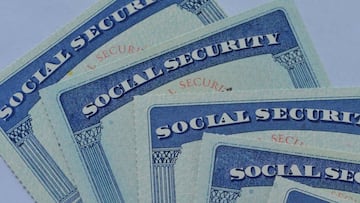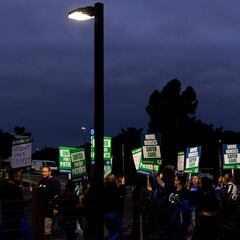What happens to Social Security benefits if you or your spouse dies?
Social Security benefits are only obtained while a person is alive, but a recipient’s relatives may be eligible to request some checks after their death.

The Social Security Administration provides a series of benefits to millions of people on a monthly basis during their retirement. These types of checks are provided for life, and upon a person’s death, the SSA will stop giving these monthly payments.
This means that retirees must manage the flow of payments well in order to receive a greater amount of money while they are still alive. Many begin to withdraw the retirement money immediately, but insurers and mutual insurance companies recommend the opposite.
Once a certain age is reached, the Social Security payment increases significantly, thus adding to the wealth of the person who is of retirement age. Also, the rest of your benefits can be passed on to your spouse, children or other loved ones.
It is advisable to know certain clauses in relation to the Social Security benefits of a deceased person.
1. There is a single death payment.
A one-time death payment of $255 may be available, provided certain requirements are met. For example, a surviving spouse may be eligible for the death payment if they lived with the person who died.
If the spouse was living separately from the deceased, but was receiving Social Security benefits based on his or her record, he or she may also be eligible for the amount of $255. If there is no surviving spouse, the children of the deceased may be eligible for the payment.
How do I apply for a Lump Sum Death Payment?
In order to apply for a Social Security Lump Sum Death Payment the process will be entirely in person, as no online option is available. Eligible claimants must call the SSA’s national toll-free service at 1-800-772-1213 (TTY 1-800-325-0778) or visit their local office.
Despite not needing an appointment, SSA officials recommend to call the SSA number and schedule an appointment to prevent people from waiting to apply.
In order to learn what documents you will be asked for, visit the SSA official website.
2. Benefits for the month of death must be returned.
Although a single death payment may be available, any benefit payments received by the deceased in the month of death or after must be returned, according to the Social Security Administration. However, how this rule is handled depends on the time of death.
If someone receives their monthly Social Security payment and then dies, the Social Security Administration may not get the money back. The Social Security Administration warns against cashing checks or keeping direct deposits received in the month of death or later.
3. Surviving spouses and others may be entitled to benefits.
Related stories
According to the Social Security Administration, certain family members may be eligible to receive survivor benefits based on the deceased beneficiary's earnings record as of the month of their death. That may include a surviving spouse age 60 or older.
When both spouses have claimed Social Security benefits and one dies, the general rule is that the larger benefit continues and the smaller benefit disappears, according to Joe Elsasser, certified financial planner and president of Covisum, a Social Security software claims company.
From checking your application status to filing an appeal, our online services have you covered. See what you can do online with #SocialSecurity today: https://t.co/0ovQotD0l9 @PerformanceGov #CXDay pic.twitter.com/kCdnfmbNjt
— Social Security (@SocialSecurity) October 3, 2023
Advice for surviving family members
- Claimants may wish to submit a restricted application. According to Elsasser, it is possible to claim a widow's benefit by letting the retirement benefit itself grow, or vice versa. For example, you can claim a widow's benefit at age 60 and then switch to your own retirement benefit at age 70.
- Social Security can provide a “benefits matrix” that compares benefit options. The document can show you how your monthly benefit and survivor benefits compare. “We always tell people that if they are looking to determine the best course of action between their own benefit and/or a surviving spouse benefit, contact the SSA and obtain the benefits matrix report which will give you the information you need to make a decision.,“ said Marc Kiner, president of Premier Social Security Consulting.
- Social Security won’t tell you which strategy will give you the maximum lifetime benefits. While Social Security staff can tell you how to get the highest benefit the day you visit an office or call, they won’t necessarily tell you how to get the maximum benefits during your lifetime, Elsasser said. Consequently, it is sometimes best to seek more personalized external advice to identify the best strategy for your situation.

